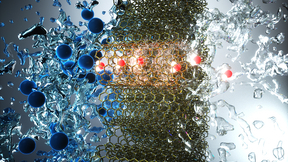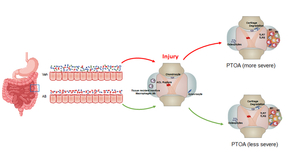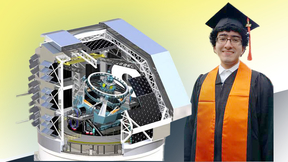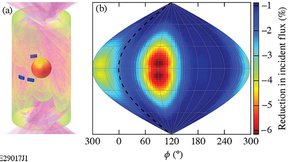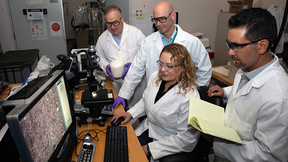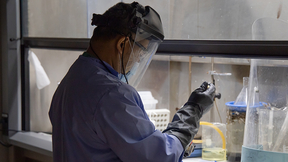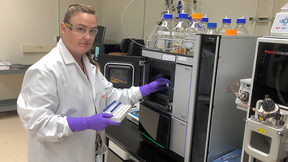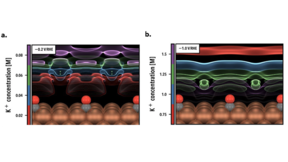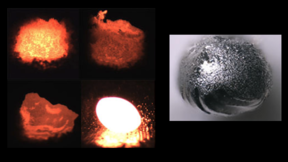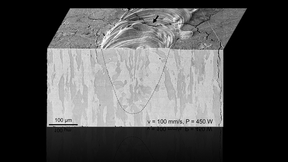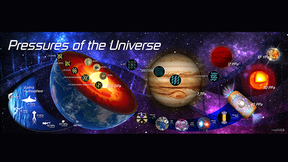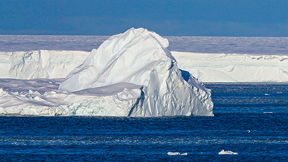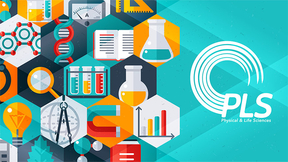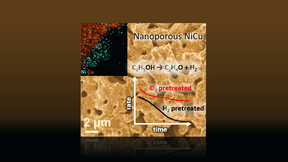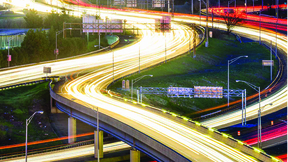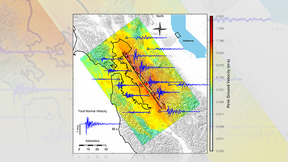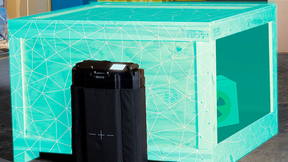Back
Physical and Life Sciences
Going with the flow for water purification
Membrane separations have become critical to human existence, with no better example than water purification. As water scarcity becomes more common and communities start running out of cheap available water, they need to supplement their supplies with desalinated water from seawater and brackish water sources. Lawrence Livermore National Laboratory (LLNL) researchers have…
Antibiotic pre-treatment reduces joint inflammation
Tearing an anterior cruciate ligament (ACL) can be an excruciatingly painful injury. Nearly 50 percent of these patients will develop a secondary form of osteoarthritis, deemed post-traumatic osteoarthritis (PTOA). Researchers from Lawrence Livermore National Laboratory (LLNL) and the UC Davis Medical Center have found that treatment with antibiotics prior to the injury…
A simple explanation to paradox of a spiraling football
The hallmark of a perfectly thrown football is a tight spiraling of the tip around the trajectory of the parabolic path of flight. Why the tip follows the trajectory has presented a paradox for some time. A team of researchers, including Lawrence Livermore National Laboratory (LLNL) physicist Willy Moss, provided a simple resolution to this paradox in a paper published as…
Inspiring future physicist while exploring dark energy
Doctoral student Victor Baules is spending his summer exploring the connection between dark energy and the expansion of our universe, but due to the pandemic, his research fellowship is more down-to-earth, taking place from his home in Alabama. Baules’ research trajectory in high-energy theory aligns with astrophysics research at Lawrence Livermore National Laboratory …
ICF implosions have significant 3D asymmetries
Data correlating two factors that lead to implosion asymmetries have brought Lawrence Livermore National Laboratory (LLNL) scientists a step closer to understanding the gap between simulations and performance of inertial confinement fusion (ICF) experiments at the National Ignition Facility (NIF). These experiments aim to ignite a propagating fusion burn wave in deuterium…
Looking skin deep at the growth of neutron stars
In atomic nuclei, protons and neutrons share energy and momentum in tight quarters. But exactly how they share the energy that keeps them bound within the nucleus — and even where they are within the nucleus — remain key puzzles for nuclear physicists. A new study by researchers at Lawrence Livermore National Laboratory (LLNL) and Washington University in St. Louis tackled…
LLNL team wins FLC national award
A shape memory foam material developed by Lawrence Livermore National Laboratory (LLNL) researchers is the foundation of a lifesaving medical device that has won a national technology transfer award. Researchers from LLNL, Santa Clara-based Shape Memory Medical Inc. and Texas A&M University incorporated the foam technology into the IMPEDE® Embolization Plug that…
Lab earns 'A' grade in OPCW test
In another month-and-a-half, a score of chemists from Lawrence Livermore National Laboratory's Forensic Science Center (FSC) will start two weeks of long days to undertake the Organization for the Prohibition of Chemical Weapons (OPCW) environmental proficiency test. Livermore chemists have been taking the proficiency tests each October since 2001, with LLNL serving as one…
LLNL an OPCW-designated lab for biomedical samples
In addition to maintaining its Organization for the Prohibition of Chemical Weapons (OPCW) laboratory designation for analyzing suspect environmental samples, LLNL also is an OPCW-designated laboratory for the analysis of biomedical samples. (See "Lab earns 'A' in OPCW test) In this instance, OPCW inspectors have the ability to collect biomedical samples for cases of…
Addressing electrolyte composition effects in CO2 electroreduction
The electrochemical conversion of CO2 into chemical fuels and other commodity products is an attractive strategy for mitigating carbon emissions while offsetting the use of fossil resources. Nevertheless, the adoption of such approaches in industrial settings has been limited by the poor efficiency and selectivity of the electrochemical cells that are used to drive CO2…
Formation of high-purity uranium via laser-induced thermal decomposition
Producing gram quantities of uranium metal in a controlled manner by traditional methods is challenging due to the complex chemistry of precursor material and extreme thermal requirements. In a recent study, LLNL researchers demonstrated a novel approach that combines modeling and an advanced experimental technique for extracting uranium from a uranium-containing compound…
Research team pairs 3D bioprinting and computer modeling to examine cancer spread in blood vessels
Lawrence Livermore National Laboratory (LLNL) scientists have paired 3D-printed, living human brain vasculature with advanced computational flow simulations to better understand tumor cell attachment to blood vessels, the first step in secondary tumor formation during cancer metastasis. The unique approach, developed with outside collaborators, lays the foundation for…
Simulations, high-speed videos help researchers see crack formation in 3D-printed tungsten in real time
Boasting the highest melting and boiling points of all known elements, tungsten has become a popular choice for applications involving extreme temperatures, including lightbulb filaments, arc welding, radiation shielding and, more recently, as plasma-facing material in fusion reactors such as the ITER Tokamak. However, tungsten’s inherent brittleness, and the microcracking…
LLNL joins new research on atom-changing pressures
High energy density (HED) scientists at Lawrence Livermore National Laboratory (LLNL) have helped launch a new National Science Foundation (NSF) effort to understand the physical and astrophysical properties of matter under pressures strong enough to change the structure of individual atoms. The Center for Matter at Atomic Pressures (CMAP) is hosted by the University of…
More than half the oceans impacted by climate change
More than 50 percent of the world’s oceans already could be impacted by climate change, with this figure rising to 80 percent over the coming decades, a research team including Lawrence Livermore National Laboratory (LLNL) oceanographer Paul Durack has found, using global ocean salinity, temperature observations and a large suite of global climate models. The findings…
Bomb-pulse Biology Research Featured in Netflix Series
Bomb-pulse biology research of User Resource scientist Bruce Buchholz and long-time collaborator Kirsty Spalding from the Karolinska Institute in Stockholm was featured in episode 6 of the Netflix documentary series “Connected: The Hidden Science of Everything” hosted by Latif Nasser.
Lab steps on the gas to enhance chemical production
To optimize catalyst performance, a team of scientists from Lawrence Livermore National Laboratory (LLNL) and collaborators has developed a detailed understanding of the effect of pretreatment-induced nanoscale structural and compositional changes on catalyst activity and long-term stability. The research could make the production of the important industrial feedstock…
Wheels keep turning on innovations for clean vehicles
The Co-Optima FY19 Year in Review report released by the U.S. Department of Energy (DOE) describes recent accomplishments to improve efficiency while reducing emissions and cost for the entire on-road fleet of combustion-powered vehicles under the Co-Optimization of Fuels & Engines program. Lawrence Livermore National Laboratory (LLNL) is playing a key role in this…
Laboratory team completes highest-ever resolution quake simulations using Sierra supercomputer
A Lawrence Livermore National Laboratory (LLNL) team has published new supercomputer simulations of a magnitude 7.0 earthquake on the Hayward Fault. This work represents the highest-ever resolution ground motion simulations from such an event on this scale. The study used the SW4 code developed at LLNL. Simulations resolved rapidly varying shaking with broader band…
R&D 100 Winner: Portable Threat Assessment
Livermore physicist Sean Walston is a co-developer for the MC-15 portable neutron multiplicity detector.


